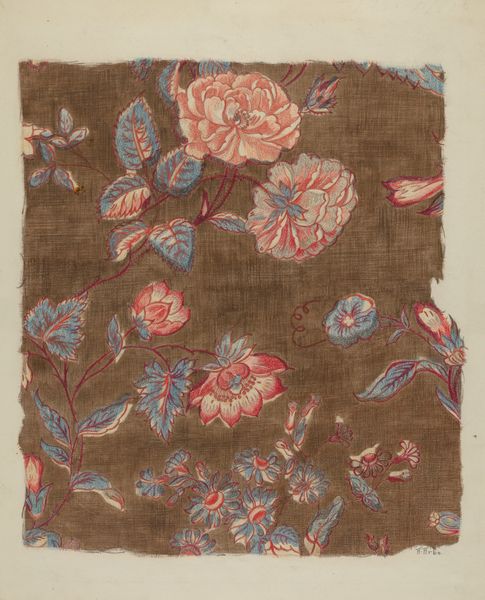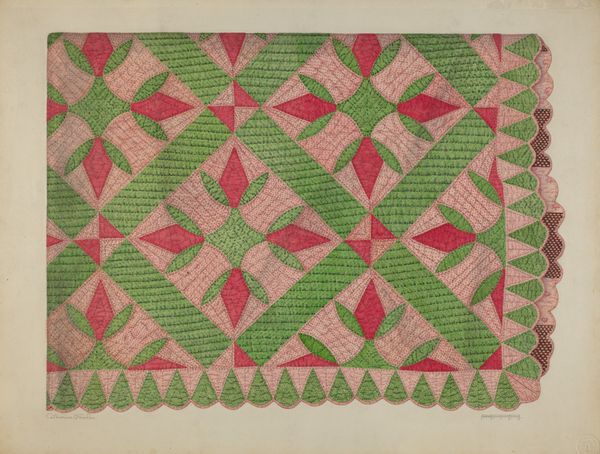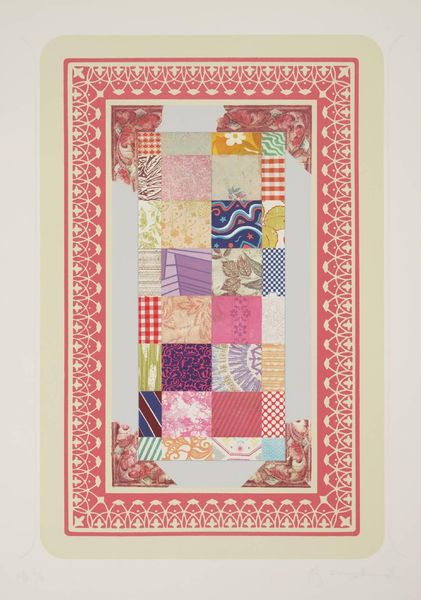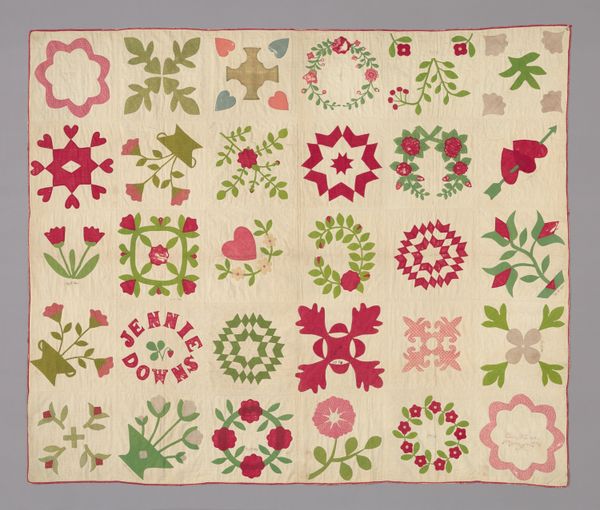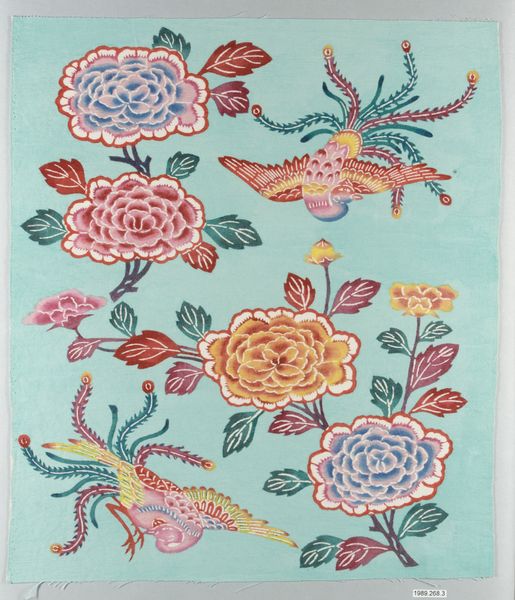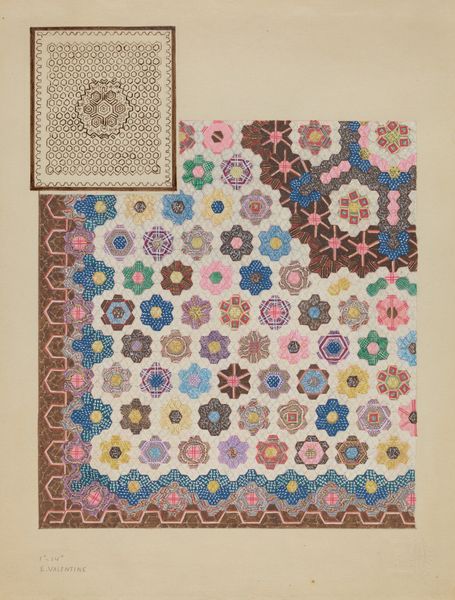
drawing, textile
#
drawing
#
water colours
#
textile
#
fashion and textile design
#
geometric
#
textile design
#
watercolor
Dimensions: overall: 35.5 x 29 cm (14 x 11 7/16 in.) Original IAD Object: 81" wide; 88" long
Copyright: National Gallery of Art: CC0 1.0
Curator: Look at this engaging design by Edith Magnette titled "Patchwork for Quilting," created around 1939. It's rendered with watercolor, likely as a preparatory drawing for a textile project. Editor: My first thought is "cozy geometry!" The repeated hexagonal patterns and the soft, blended colors give it a familiar, comforting feel. It looks almost like a child's drawing, or perhaps a blueprint for domestic creativity. Curator: Precisely. The artwork gives us a glimpse into the domestic arts movement and the often undervalued labor of women in the creation of textiles. Notice how each hexagon contains diverse fabric patterns – a mix of florals, geometric shapes, and polka dots. Magnette is playing with the interplay of mass-produced patterns and handcrafted designs, something inherently political in its time. Editor: Yes, each individual hexagon almost feels like a unique story, each piece of fabric hinting at a past life and a former purpose. I wonder, what did these colors and forms symbolize to Magnette and the women who created similar textiles? Perhaps the hexagon’s symmetry hints at aspirations to an underlying order amid the chaos of daily life? Curator: A compelling point! In my opinion, the piece is not merely decorative. Rather, Magnette highlights the history of collective practice by creating a blueprint of her creative vision of textile artmaking through an image that would likely materialize at a community gathering. Editor: Looking at it through this lens, the somewhat uneven application of watercolor seems not like a defect, but rather underscores the human touch, and points to a reality different than perfection. Curator: Precisely! The imperfect rendering serves to empower overlooked stories, elevating mundane, everyday activity to art, ultimately making it timelessly impactful. Editor: After diving into Magnette's patchwork, I am left contemplating its inherent symbolism, that points to our innate need for warmth, security, beauty and a common visual language of shapes and colours. Curator: Agreed, and further exploration opens into fascinating questions about art and labor, and reminds us of art history's relationship to ongoing political struggles in the 21st century.
Comments
No comments
Be the first to comment and join the conversation on the ultimate creative platform.



